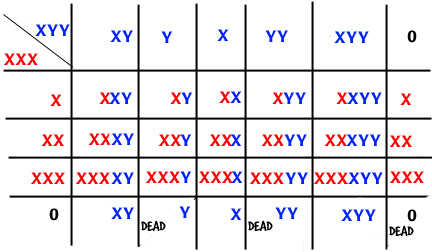
| MadSci Network: Genetics |
This is a very good question. If you have been talking about sex chromosome groupings then you may already have learned about the process of meiosis. Most of the cells of our body is diploid and has 23 pairs of chromosomes. The gametes (sperm and eggs) are haploid and have 23 chromosomes. This means that during the process of creating gametes (meiosis), there is a reduction step that separates paired chromosomes. Usually this separation is equal, and 23 chromosomes, one from each pair, end up in each daughter cell. An unequal separation is called a non-disjunction. In rare cases, the sex chromosomes do not separate and one daughter cell has no sex chromosomes while the other have both. If these gametes are fertilized, then they will not have a normal number of sex chromosomes and can result in the X0, XXX, or XYY.
What happens in the gametes that these people produce? Well, if they are XXX, then during meiosis, they will have another non-disjunction in that one X chromosomes will end up in one daughter cell and 2X in the other, OR 3X in one and none in the other. In the case of XYY, they can have XY, and Y, or X and YY, or XYY and 0 as final gamete products. Using this information you can build a Punnet square and see what types of offspring might result.

Note that in three cases (YY, Y and 0) there will be nonviable offspring. In some of the other cases, the offspring will be sterile and/or mentally handicapped. You can look up Klinefelter and Turner syndromes to research the actual phenotypes of people with more than the normal 2 sex chromosomes (Klinefelter) or only one chromosome ( Turner, X0).
Try the links in the MadSci Library for more information on Genetics.